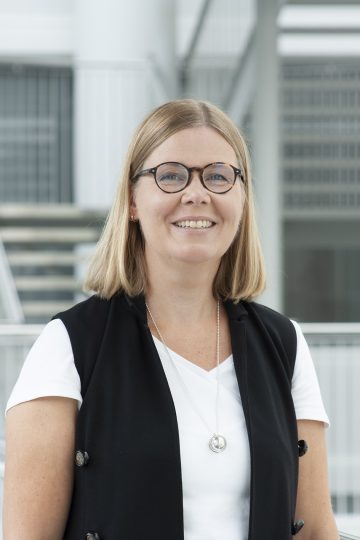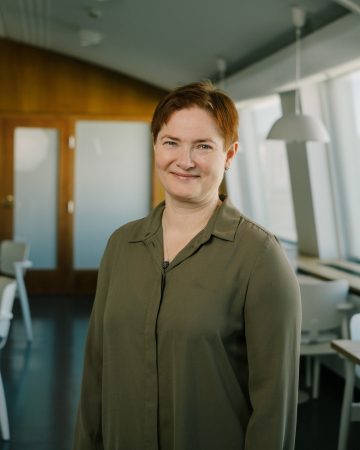The built environment sector is ready to take a step towards carbon neutral circular economy society

Nani Pajunen
Principal (D.Sc.)
AFRY Management Consulting
Finland
nani.pajunen@afry.com

Jessica Karhu
Team Manager, Environmental Services (M.Sc.)
Building Information Ltd
Finland
jessica.karhu@rakennustieto.fi
At present, we face challenges whose outcomes extend beyond one geographical area or state or a single organization. The transition towards sustainability and a carbon neutral circular economy needs a systemic change in the current structure of society and the global economy. There is a need to rethink how our society works in the future and how to make changes at every level and in every sector of society. The solutions for tackling a variety of problems need innovations generated in the chain and networks in collaboration between different sectors of society and the large scale of professionals.
Regarding the construction industry, the consequences of the crisis are already visible – floods, heat waves, and shortages of sand and water are tangible issues already in many places. What we do need are solutions – how to do systemic change at the local and global levels, from the strategies of corporations to the operational level as well. In addition, we need more incentives to accelerate the sustainability transition while crossing possible obstacles in cooperation with the private and public sectors.
In the future, 75% of the population will live in the cities. Already now around half of our natural resources are consumed by the building and construction sectors. How we plan and build the areas where we live is vital for a sustainable future – is it even possible to use carbon neutral circular economy solutions in our daily lives? In practice, this means how to plan areas, design products, develop new materials in a new way, new kinds of competitive tendering processes and procurements, operations on the construction site, and so on. The key idea is to rethink everything and to integrate life cycle thinking in every part of the built environment sector´s actions and the sectors linked to it.
In the European Union, we have an encouraging environmental policy and legislation, which promotes a circular economy. However, concrete effects will only be achieved through implementation. In addition, there is no worldwide legislation, so the only way to achieve global sustainability targets is via the private sector and trade. Therefore, it is important to encourage and support the private sector to develop circular economy solutions and business activity for the market. Also, it is reasonable to support and prioritize profitable circular economy business cases already on the market. Through the global value nets, there is a huge opportunity to make a giant leap towards a sustainable future.
In the book “Circular economy in the built environment”, there is a list of the next steps needed on the construction industry´s way towards sustainability and carbon neutral circular economy society:
The building phase – before the decision to build, rethink and consider
- Before you start, rethink everything – every phase of the project. What can you do differently in a more environmentally friendly way?;
- Efficient use of present space. Before starting to design a new building, conduct a search. Can you find a needed space from the present building stock?;
- Area planning. How are the areas supporting sustainable lifestyles and well-being?;
- Consider demolition. Is it necessary? If you demolish, make a good plan for the demolition phase. Use as many demolished building elements and parts as a product as possible, and recycle the rest of the materials.;
- Material development based on recycled materials. Develop new materials using as many recycled materials as possible.;
- Use secondary raw materials. Use recycled materials and products in the new building as much as possible.;
The planning and procuring phases – demand and design circular economy solutions
- Design for a circular economy. Design and develop buildings, products and materials in accordance with circular economy principles.;
- Design “everlasting” buildings. Make it your goal that the building designed by you will last forever.;
- Demand is the strongest tool to promote the circular economy and sustainability. Use this tool!;
- Minimize environmental impacts also in the use phase. Take care of the buildings, maintain them, and efficiently use energy.;
- Measure the change made. Monitor and measure the change made. Make changes to the plans if necessary.;
- Learning by doing. It is not time to lose – the sustainability crisis is already here. We need to take action now, not only develop, design and conduct surveys. The step is not maybe perfect, but we can learn by doing.;
- The role of data. Collect important data during the life cycle of a building to help the evaluation of change. Use the data model as a data bank of materials and products.;
- Responsibility via the life cycle. Challenge the supply chain organizations to promote circular economy solutions.;
Learn a lesson and collaborate
- Smart solutions. Use digitalization and smart solutions there where it gives added value. Remember, digitalization has an environmental footprint as well.;
- New circular economy business models. Adopt circular economy business models, such as product-as-a-service and sharing models.;
- Collaborate. There is a need for cross-sectoral collaboration. Share your know-how and do better business.;
- The role of investors and owners. The circular economy is a new business model – as an owner, a financier or a funder, it is your decision to demand more sustainable solutions.;
- Be a proud professional. The best act of sustainability is to build a high-quality environment that will last for future generations.
The next critical step is committing the industry to make the needed changes. There are still many challenges on the development path towards sustainability. At the same time, there is huge business potential in the circular economy. The most important task for the whole industry is to continue development work. It does not matter if you are the forerunner in the circular economy business or the second one. The only thing is, we all need to be part of this change.
Expert article 3342
>Back to Baltic Rim Economies 5/2022
To receive the Baltic Rim Economies review free of charge, you may register to the mailing list.
The review is published 4-6 times a year.
